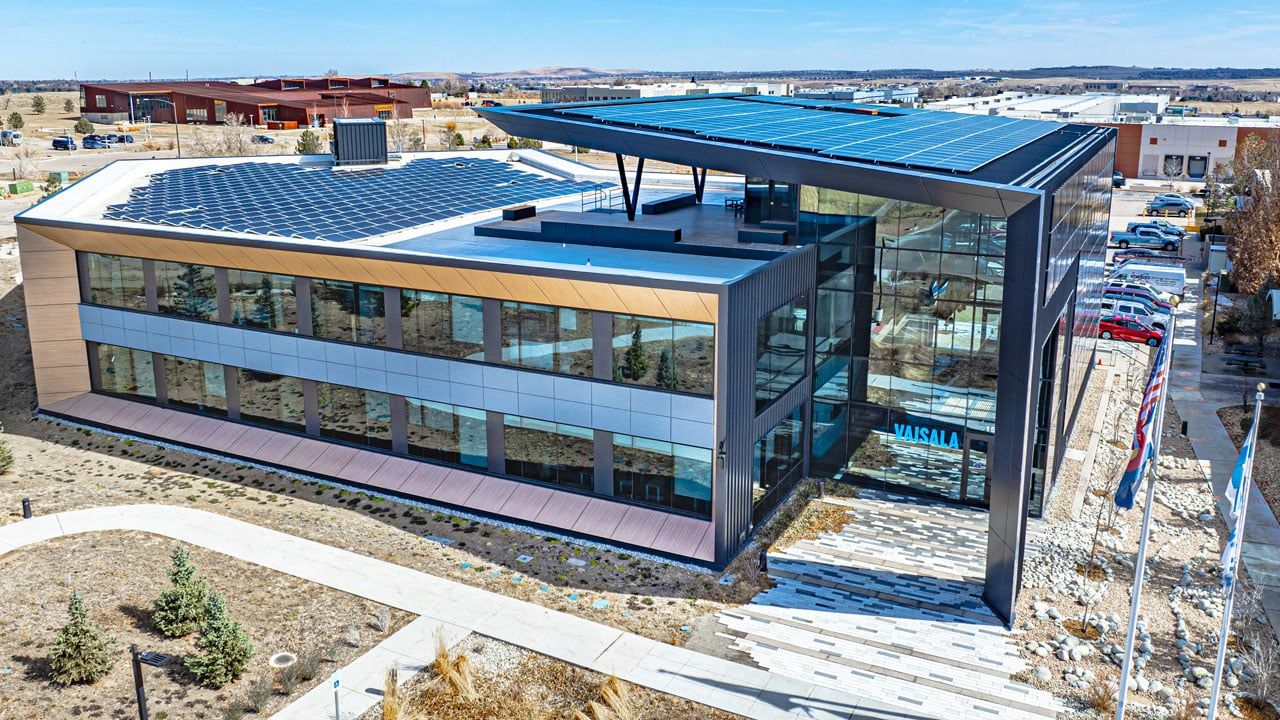Special Transit Web site made older-user friendly
BOULDER – Over the next 20 years, the number of individuals in the U.S. who will be over the age of 75 will triple. One of this generation’s fundamental needs is to remain independent, active and mobile.
With age, however, more challenges to mobility arise. Luckily a Boulder-based private nonprofit organization, Special Transit, has enhanced its Web site to make it easy to submit transportation requests.
SPONSORED CONTENT
Commercial Solar is a big investment, but not an overwhelming one
Solar offers a significant economic benefit for commercial property owners while also positively impacting the environment and offering a path to compliance for new municipal requirements like Energize Denver. A local, experienced solar installer will help you navigate the complexities of commercial solar to achieve financial success for your project.
“Since baby boomers use technology, we wanted to make sure the Web site took into consideration the needs of people with motor, visibility or vision disabilities or people using readers,´ said Diana DeBrohun, Special Transit development specialist. These disabilities can make it challenging to utilize Web site services.
Special Transit, which works with both older people and people with disabilities, developed the site to make sure it offers enhancements that assure usability for everyone. Accessibility features of the new Web site, designed by Quintus Design, include keyboard navigation that works with screen readers and easy-to-read large type with high contrast.
A screen reader is software that interprets screen displays and communicates it through a sound synthesizer or a computer sound card. Some graphic programs throw screen readers into an endless loop of starting over, according to DeBrohun.
Additional enhancements include an HTML alternative for downloading PDF files. Cascading style sheets can be turned off so individuals can change font, text size and color of content that best suit their visual needs. The new Web site also accommodates online reservations and trip scheduling.
The organization launched its new Web site on July 26 in honor of the 16th anniversary of the Americans with Disabilities Act.
Special Transit started in 1979 when Boulder County Commissioners put together its first year’s funding – $50,000 – and that year became a private nonprofit organization. T
oday, the para-transit service provider runs on a multimillion-dollar budget, according to DeBrohun. I
t’s the only one of its kind in the area, providing door-to-door, wheelchair accessible, driver-assisted transportation to people with disabilities as well as to seniors, low-income and rural-area residents. The service aids travel to medical appointments, treatment centers, meal sites, shelters, adult day care, educational facilities and jobs.
“Our drivers will go into a house, help someone out and all the way in to where they’re going,” DeBrohun said.
Special transit charges either $2 or $4 per ride depending on the location. The service costs the organization about $21 per ride.
Funding for the organization comes from foundations, government funding, individual and business donations.
With the increased number of individuals who need the service, Special Transit is looking to expand the sources for funding. Although the organization hasn’t relied on public funding in the past, it’s turning to that source now.
An event in Longmont is scheduled for the fall with a target goal of raising $25,000. Details are still being worked out but event ticket buyers are expected to get a look at the private car collection of Boulder developer Stephen Tebo – more than 300 cars – and food.
In addition to outside funding, Special Transit supplements its budget with money-making services. For example, the organization has contracts with RTD to run the HOP bus line in Boulder as well as access-a-Ride and call-n-Ride.
The HOP is a fully funded contract with the city of Boulder, the University of Colorado and RTD. As a circulator shuttle that loops through central Boulder, it provides more than 1 million passenger trips yearly.
access-a-Ride meets the mobility needs of people with disabilities. “RTD is required by the Americans with Disabilities Act to provide services to these groups and since that’s what we do. They contracted us to do it,” DeBrohun said.
access-a-Ride provides curb-to-curb transportation to passengers with disabilities who are unable to use RTD’s regular buses and who qualify for certification under the guidelines established by the ADA.
Special Transit has been operating the service in Boulder County and surrounding communities since 1996.
Call-n-Ride is a curb-to-curb transportation service that connects area residents with RTD services at park-n-Rides and other RTD locations. Running the service is a fully funded contract with RTD.
“A new thing we’re doing now is providing mobility training,” DeBrohun said. “Individuals come to us who want to take advantage of all the public transportation that’s available. Our mobility trainers access cognitive and physical abilities to figure ways these individuals can use public transportation.”
The new service started in 2003 and to date has trained about 120 individuals.
BOULDER – Over the next 20 years, the number of individuals in the U.S. who will be over the age of 75 will triple. One of this generation’s fundamental needs is to remain independent, active and mobile.
With age, however, more challenges to mobility arise. Luckily a Boulder-based private nonprofit organization, Special Transit, has enhanced its Web site to make it easy to submit transportation requests.
“Since baby boomers use technology, we wanted to make sure the Web site took into consideration the needs of people with motor, visibility or vision disabilities or people using readers,´ said Diana DeBrohun, Special…
THIS ARTICLE IS FOR SUBSCRIBERS ONLY
Continue reading for less than $3 per week!
Get a month of award-winning local business news, trends and insights
Access award-winning content today!

